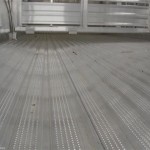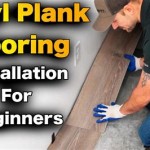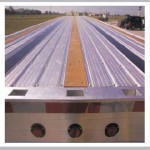Labor Cost to Install Laminate Flooring on Stairs Per Square Foot
Laminate flooring has gained considerable popularity as a cost-effective and aesthetically pleasing alternative to hardwood. Its durability, ease of maintenance, and wide range of styles make it a desirable choice for many homeowners. While often associated with flat surfaces, laminate flooring can also be installed on stairs, offering a cohesive look throughout a home. However, the process of installing laminate on stairs is more intricate than installing it on a flat floor, impacting the labor costs involved.
This article aims to provide a comprehensive understanding of the factors influencing the labor cost per square foot for installing laminate flooring on stairs. It will delve into the specific tasks involved, the considerations that professionals take into account when providing estimates, and the average price ranges that homeowners can expect.
Complexity of the Staircase Design
The design of the staircase significantly affects the labor cost. A straight, simple staircase will generally be less expensive to install laminate on than a staircase with curves, landings, or winders. Each unique design feature presents additional challenges in cutting and fitting the laminate planks.
For instance, curved steps require precise measurements and careful cutting to ensure a seamless fit, increasing the time required for installation. Landings introduce additional surface area and potentially different angles, requiring more materials and meticulous work. Winders, with their irregular shapes, demand advanced cutting skills and meticulous attention to detail, significantly increasing the labor time.
The presence of existing architectural elements, such as banisters or decorative moldings, can further complicate the installation process. These elements may need to be temporarily removed or carefully worked around, adding to the overall time and effort required. Similarly, the condition of the existing stairs plays a role. Uneven surfaces or structural issues may need to be addressed before the laminate can be installed, adding to the pre-installation preparation time and potentially increasing material costs, thereby influencing the final labor expense.
Professional installers will consider the intricacy of the staircase design when providing a quote. They will assess the number of cuts required, the complexity of the angles, and the need for specialized tools or techniques. Therefore, homeowners should provide as much detail as possible about their staircase design to receive an accurate estimate.
Preparation Required Before Installation
Proper preparation is crucial for a successful and long-lasting laminate flooring installation on stairs. The amount of preparation required directly influences the labor cost. This preparation can include several steps, each contributing to the overall time and effort needed.
Firstly, the existing stair surface needs to be thoroughly cleaned and inspected. Any debris, old adhesives, or loose materials must be removed. This ensures a clean, stable base for the laminate to adhere to. If the existing surface is uneven, it may need to be leveled using self-leveling compound or shims. This step is critical as uneven surfaces can cause the laminate to shift or crack over time, compromising the integrity of the installation.
Secondly, the treads and risers may need to be repaired or replaced if they are damaged or worn. This can involve patching holes, filling cracks, or replacing entire sections of the stair structure. The extent of these repairs will directly impact the labor time and material costs. In some cases, the existing stairs may need to be reinforced to ensure they can support the weight of the laminate flooring and foot traffic.
Thirdly, underlayment is often installed beneath the laminate flooring to provide cushioning, reduce noise, and improve insulation. The type of underlayment used can also influence the labor cost, as some types are easier to install than others. Installing underlayment on stairs requires precise cutting and fitting, which adds to the overall preparation time.
Finally, measurements need to be taken carefully to ensure the laminate planks are cut to the correct size and shape. This is particularly important on stairs, where even slight miscalculations can result in visible gaps or an uneven appearance. The more precise the measurements and cuts, the better the final result will be, but this also increases the time spent on preparation.
Installers typically factor in the time required for preparation when providing a labor estimate. The more preparation that is needed, the higher the labor cost will be. Therefore, it is important for homeowners to understand the condition of their existing stairs and to address any necessary repairs before the laminate installation begins.
Type of Laminate Flooring Chosen
The type of laminate flooring selected also affects the labor cost. Different laminate products have varying levels of complexity in their installation methods.
Some laminate flooring features a simple click-lock system, which allows the planks to be easily connected without the need for glue or nails. This type of installation is generally faster and less labor-intensive, resulting in lower labor costs. However, even with a click-lock system, installing laminate on stairs requires precise cuts and careful fitting to ensure a secure and visually appealing result.
Other laminate flooring products may require the use of adhesives or nails to secure the planks to the staircase. This type of installation is more time-consuming and requires greater skill, as the planks must be accurately aligned and securely fastened to prevent them from shifting or coming loose. The type of adhesive used can also influence the labor cost, as some adhesives are more difficult to work with than others.
Furthermore, the thickness and quality of the laminate flooring can affect the ease of installation. Thicker laminate planks are generally more durable and easier to work with, but they may also require more powerful cutting tools. Lower-quality laminate flooring may be more prone to chipping or cracking during installation, which can increase the amount of time and effort required.
The choice of laminate flooring also impacts the type of stair nose or trim that is used. Stair noses are designed to protect the edge of the stair tread and provide a finished look. Different types of stair noses require different installation methods, which can affect the labor cost. Some stair noses are simply glued or nailed to the tread, while others require more complex installation techniques.
Professional installers will be familiar with the installation requirements of various laminate flooring products. They will consider the complexity of the installation process when providing a labor estimate. Therefore, homeowners should discuss their laminate flooring options with the installer to understand the potential impact on labor costs.
Beyond these key points, other factors can influence labor costs. Accessibility to the staircase can be a factor. If the staircase is located in a tight space or is difficult to access, it may take longer to transport materials and perform the installation. Similarly, the time of year can influence labor costs. During peak seasons, such as the spring and summer, demand for home improvement services is typically higher, which can lead to increased labor rates. The geographical location of the property can also play a role, as labor costs tend to be higher in metropolitan areas than in rural areas.
The complexity of integrating the laminate flooring on the stairs with existing flooring in adjacent rooms requires a careful transitional approach. Seamless transitions often demand additional cutting, fitting, and potentially the installation of specialized transition strips, which subsequently impact labor expenditure. The type of existing flooring and the desired aesthetic will dictate the complexity of this integration.
Homeowners should also be aware of potential hidden costs that may arise during the installation process. For example, if unforeseen structural damage is discovered during the preparation phase, additional repairs may be necessary. These repairs can add to the overall cost of the project and may require a change order. It is advisable to have a contingency fund in place to cover any unexpected expenses.
The number of stairs also affects the overall price. Obviously, the more steps that need to be covered, the higher the overall project cost will be. This is a simple and direct correlation that homeowners can easily understand.
Finally, the reputation and experience of the installer can influence labor costs. Experienced installers may charge higher rates, but they are also more likely to provide a high-quality installation that will last for many years. It is important to choose a reputable installer who has a proven track record of success.

How To Install Laminate Flooring On Staircase Step By Guide

The Cost To Install Laminate Flooring In 2025 Nerdwallet

How Much Does It Cost To Install Laminate Flooring Guide 2024

How Much Does Flooring Installation Cost 2025 Guide

How Much Does Laminate Flooring Installation Cost Angi

How Much Does It Cost To Install A Vinyl Plank On Stairs Lx Hausys

How To Install Laminate Flooring On Stairs 13 Steps

How To Install Laminate Flooring On Stairs Atkinson Inspection Services

How Much To Install Laminate Flooring Lv Hardwood Toronto

What S The Cost Of Installing Laminate Flooring In 2025 Checkatrade
Related Posts








